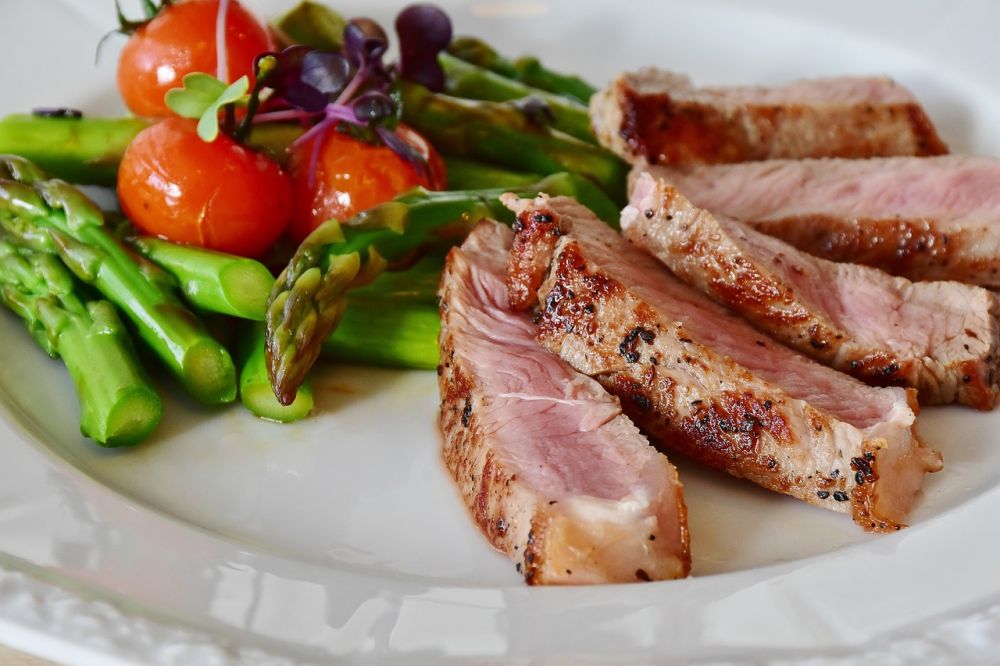Okinawa Diet: A Comprehensive Guide to Healthy Living

Introduction
The Okinawa Diet is a traditional way of eating that originated in the Okinawa Island of Japan. Known for its numerous health benefits and ability to promote longevity, the Okinawa Diet has attracted attention from people all around the world. In this article, we will provide an in-depth overview of the Okinawa Diet, including its different types, popularity, and quantitative measurements. We will also discuss the differences between various versions of the diet and provide a historical analysis of its advantages and disadvantages.
Overview of the Okinawa Diet

The Okinawa Diet is characterized by a high consumption of plant-based foods such as fruits, vegetables, whole grains, and legumes. It emphasizes the consumption of nutrient-dense foods with low energy density, which means you can eat more food while consuming fewer calories. This aspect of the diet helps in weight management and reducing the risk of chronic diseases.
Different Types of Okinawa Diet
There are several variations of the Okinawa Diet, each with its own unique approach. The traditional Okinawa Diet focuses on consuming fresh and locally sourced ingredients, including tofu, sweet potatoes, seaweed, and fish. Another version, known as the Okinawa Caloric Restriction Diet, involves reducing daily caloric intake while still ensuring a balanced nutrient intake. Additionally, the Okinawa Macrobiotic Diet places emphasis on whole grains and fermented foods.
Popularity and Adoption of the Okinawa Diet
The Okinawa Diet gained popularity in the 20th century when researchers observed the exceptional health and longevity of the Okinawan population. This has led to increased interest and adoption of the diet in various parts of the world. Many individuals are drawn to the Okinawa Diet due to its potential to promote weight loss, improve overall health, and reduce the risk of chronic diseases such as heart disease and cancer.
Quantitative Measurements of the Okinawa Diet
Multiple studies have been conducted to measure the impact of the Okinawa Diet on health and longevity. These studies have found that Okinawans have low rates of heart disease, stroke, and certain types of cancer. Additionally, Okinawans have been observed to have longer lifespans compared to other populations. The diet’s high intake of antioxidants, fiber, and healthy fats, along with its low caloric density, are believed to contribute to these positive health outcomes.
Differences Between Okinawa Diet Variations
While the different versions of the Okinawa Diet share common principles, they also have distinct characteristics. For example, the traditional Okinawa Diet includes seafood as a protein source, while the Caloric Restriction Diet allows for a more flexible approach to protein intake. The Macrobiotic Diet, on the other hand, focuses on whole grains and fermented foods as primary sources of nutrition. These differences cater to individual preferences and dietary requirements, allowing for customization and making the Okinawa Diet accessible to a wider audience.
Historical Analysis of the Okinawa Diet’s Pros and Cons
Over time, the Okinawa Diet has faced both praise and criticism. Its emphasis on plant-based foods and balanced nutrition has been lauded for promoting longevity and reducing chronic disease risk. However, some have argued that the traditional Okinawan cuisine’s high intake of soy products and carbohydrates may not suit everyone’s dietary needs. Additionally, concerns have been raised about the sustainability of sourcing specific Okinawan ingredients outside of its native region. These historical pros and cons contribute to the ongoing evolution and adaptation of the Okinawa Diet.
Conclusion
The Okinawa Diet offers a promising approach to healthy living, based on the balanced consumption of nutrient-dense, low-calorie foods. Its multiple variations cater to different dietary preferences and needs, allowing individuals to personalize their approach to health and wellness. With its historical significance, notable health benefits, and ongoing popularity, the Okinawa Diet continues to attract individuals seeking a long and healthy life.
References:
1. Willcox DC, et al. The Okinawa Program. London, UK: Clarkson Potter; 2001.
2. Tuso P, et al. Nutritional update for physicians: plant-based diets. Permanente Journal. 2013;17(2):61-66.
3. Ogo S, et al. The Okinawan Caloric Restriction Study: design and methods. Aging Clinical and Experimental Research. 2013;25(1):97-106.
4. Beresford SAA, et al. Low-fat dietary pattern and risk of colorectal cancer: The Women’s Health Initiative Randomized Controlled Dietary Modification Trial. Journal of the American Medical Association. 2006;295(6):643-654.
FAQ
What is the Okinawa Diet and what does it emphasize?
What are the different types of Okinawa Diet?
What are the benefits and drawbacks of the Okinawa Diet?
Fler nyheter
Föräldrapenning: En guide till trygg ekonomisk start för småbarnsföräldrar
Introduction The Okinawa Diet is a traditional way of eating that originated in the Okinawa Island of Japan. Known for its numerous health benefits and ability to promote longevity, the Okinawa Diet has attracted attention from people all around the ...
02 december 2025
Hlr-utbildning i Stockholm: rädda liv med rätt kunskap
Introduction The Okinawa Diet is a traditional way of eating that originated in the Okinawa Island of Japan. Known for its numerous health benefits and ability to promote longevity, the Okinawa Diet has attracted attention from people all around the ...
02 december 2025
Barnmorskemottagning i Malmö: Professionell och personlig mödravård
Introduction The Okinawa Diet is a traditional way of eating that originated in the Okinawa Island of Japan. Known for its numerous health benefits and ability to promote longevity, the Okinawa Diet has attracted attention from people all around the ...
02 december 2025
Invisalign: Den moderna lösningen för tandreglering
Introduction The Okinawa Diet is a traditional way of eating that originated in the Okinawa Island of Japan. Known for its numerous health benefits and ability to promote longevity, the Okinawa Diet has attracted attention from people all around the ...
30 november 2025











